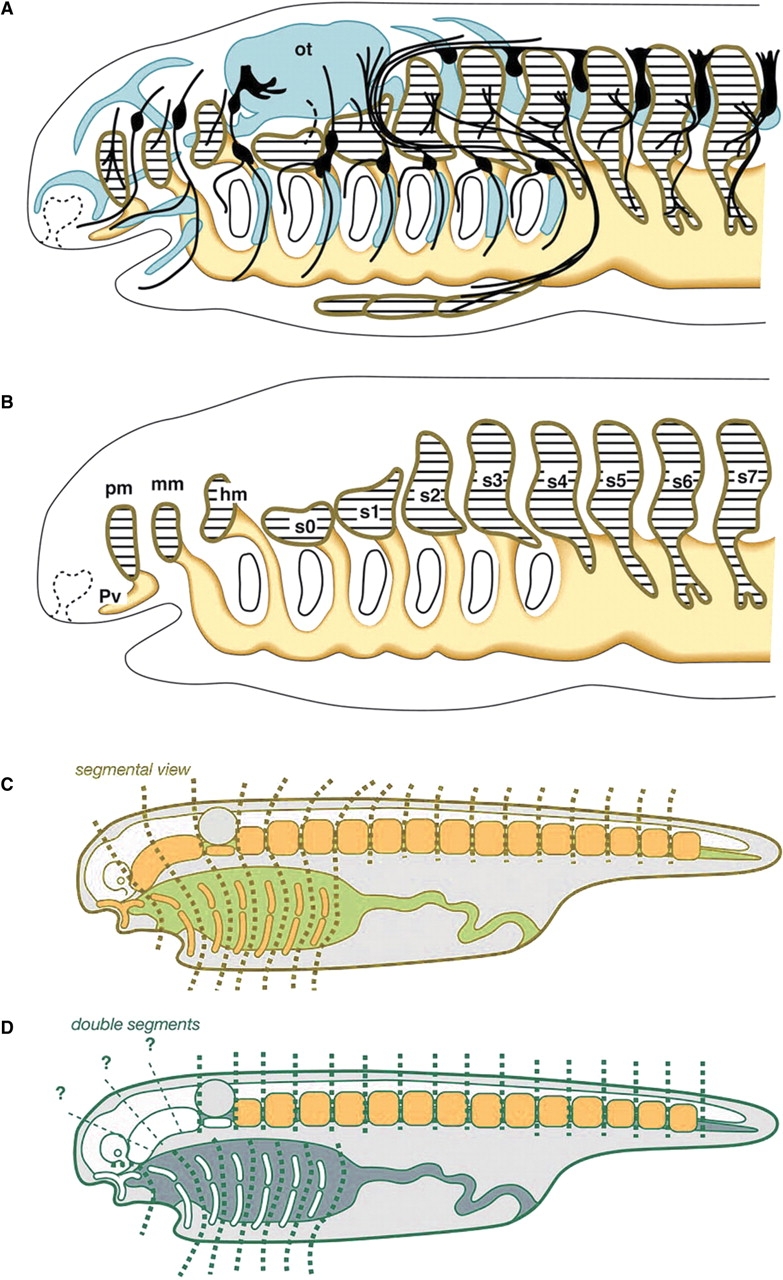Fig. 1.

Segmental views of the vertebrate head. (A) Goodrich's (1930) formulation of the vertebrate head is based on the morphology of the mid-pharyngula of elasmobranchs. (B) When the skeletal and peripheral nervous systems are removed from the scheme, it is evident that it was based on the segmentation of the paraxial mesoderm. Note that each of the head somites (pm, mm, hm, s0–3) is associated ventrally with the pharyngeal arch mesoderm. (A) and (B) were modified from Kuratani et al. (1999). (C) Typical segmentalist perspective. The vertebrate head is assumed to contain only one type of segmentation that involves metamerism of paraxial mesodermal segments and pharyngeal arches. (D) An example of a nonsegmentalist theory that assumes independent patterns of metamerisms for somites and pharynegal arches but questions the presence of segments in head mesoderm. Abbreviations: hm, hyoid somite; mm, mandibular somite; ot, otic vesicle; pm, premandibular somite; pv, Platt's vesicle; s0–7, somites. (C) and (D) were modified from Kuratani (2003).
